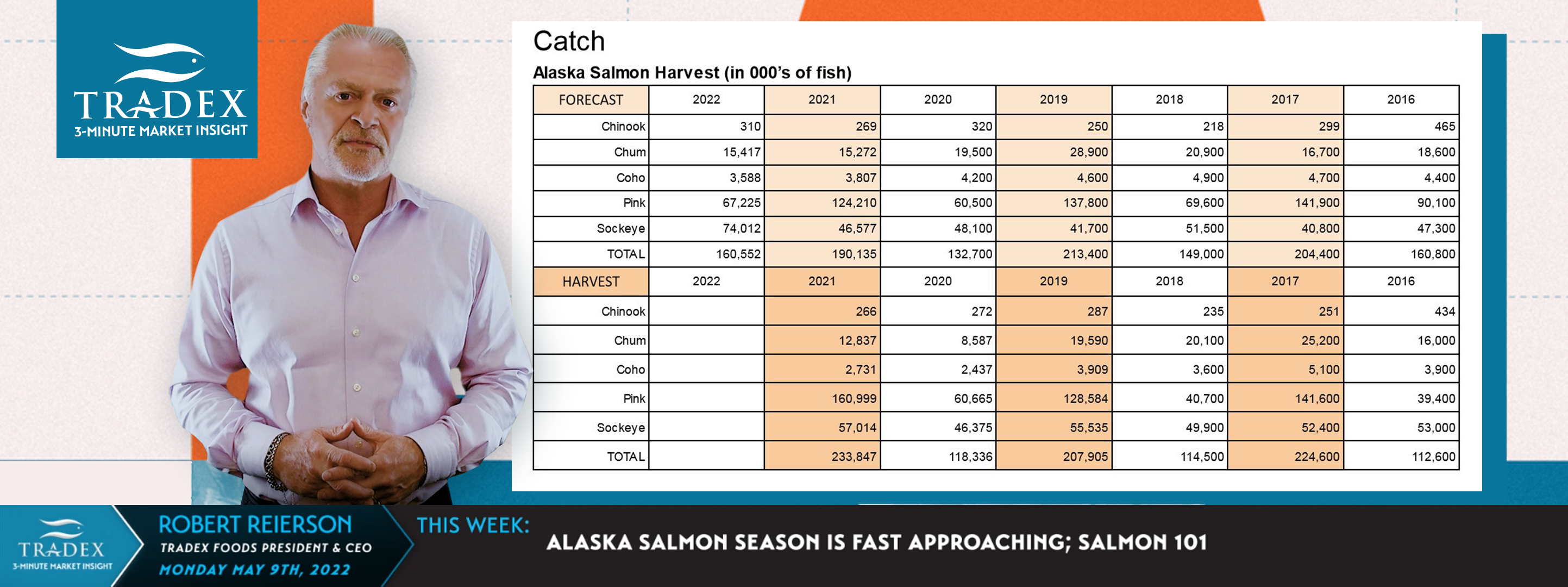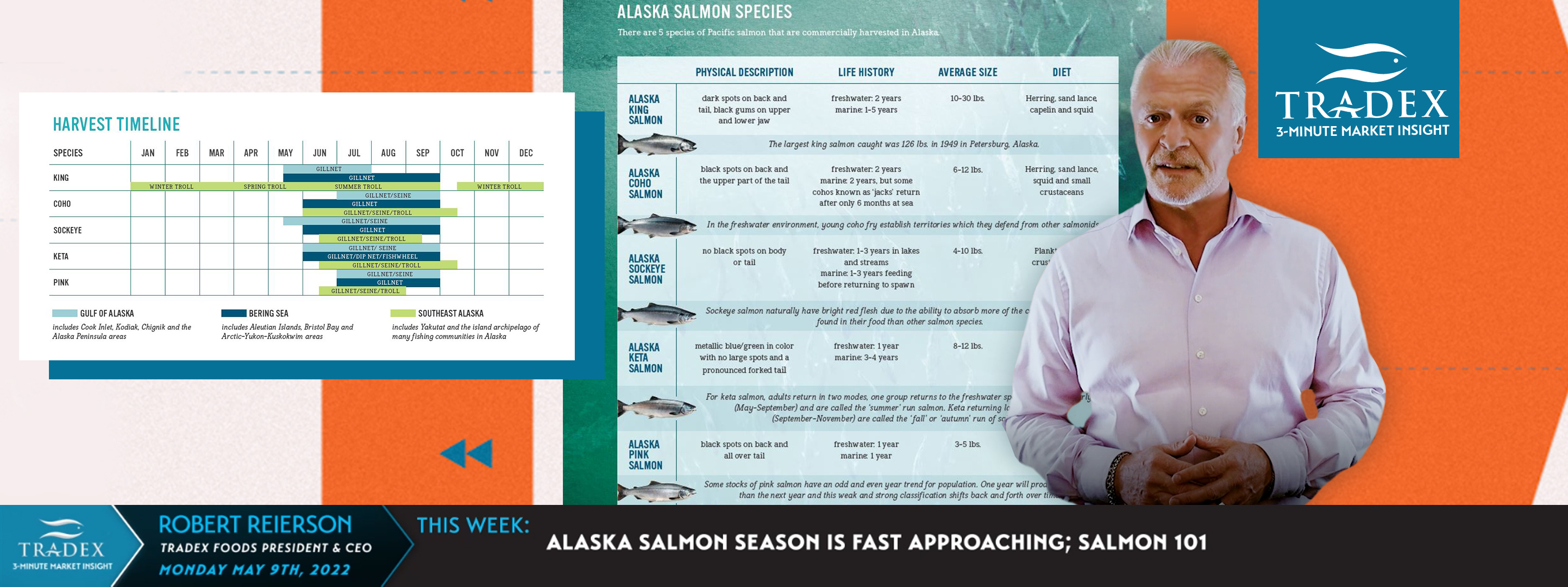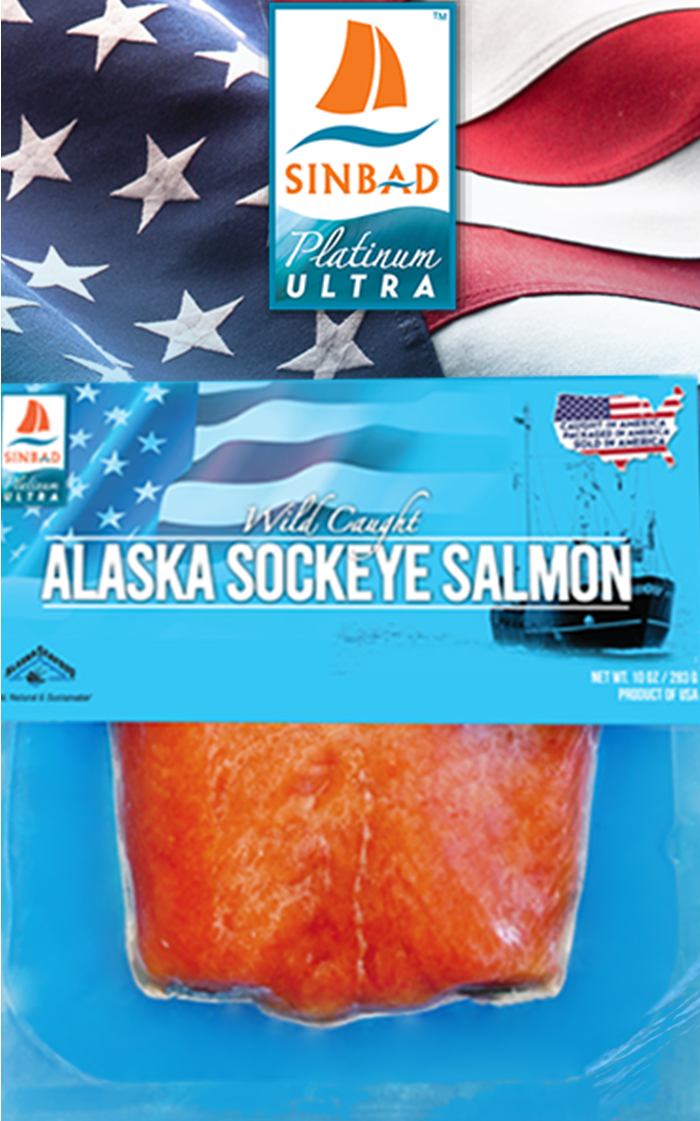
Loading
EP 588 | AIRED 05/09/2022
Alaska Salmon Season is Fast Approaching; Alaska Salmon 101
May 9th, 2022 - Alaska Salmon season is fast approaching and seafood buyers should now be planning for the species, sizes, and specs they want for their Salmon program this summer. For this episode we give you a light Salmon 101 refresher - but first, we'll provide our weekly recommendation.
--- Even-year Salmon seasons in Alaska are less abundant than odd-years primarily due to less Pink Salmon harvested on even-years.
Out of Alaska Department of Fish and Game's 2022 Total Salmon forecast of 160 million fish, 67.2 million are expected to be Pinks, and a record setting 74 million are projected to be Sockeye.
For Sockeye, all eyes will be on the globally recognized Bristol Bay Sockeye which is Alaska's highest Sockeye producing area accounting for about 80 percent of the Sockeye harvest statewide.
Our recommendation is to start talking to your supplier about your Salmon Program for species, sizes, and specs.

It's too early to speculate on how sanctions on Russia and the 315,000 metric tonnes of Russia Salmon forecasted to be harvested this summer will affect North American supply - but (at this time), we do know there will be less Pinks, and more Sockeye out of Alaska this year.
Canada, Washington, Oregon, and California are not likely to produce any significant amounts of Salmon again this year as fisheries below Alaska continue the battle to save their Salmon populations.
Keep tuned-in here as we continue to provide a pulse report on the upcoming Salmon Market including an exclusive on Bristol Bay Sockeye in the coming weeks.

--- Now onto some Alaska Salmon 101.
Nearly 95 percent of Wild-Caught Salmon harvested in North America comes from Alaska.
In order of largest to smallest they are King Salmon (averaging 10-30lbs in size), Coho (averaging 6-12lbs), Chum (averaging 8-12lbs), Sockeye (averaging 4-10lbs), and Pinks (averaging 3-5lbs).
Alaska's Summer Salmon season typically runs from June to September in a mix of Gillnet, Seine, and Troll fisheries, with the peak of the harvest typically happening July through August.

Advertise Here: advertising@tradexfoods.com
Looking at a 10-year average, data shows that 57 percent of Alaska Salmon products are processed as Frozen H&G - with Fresh H&G equating to 6 percent.
About 21 percent gets produced as canned Salmon, 6 percent as frozen fillets, and less than 1 percent as fresh fillets.
In order to keep this light, we'll end this episode here, however be on the lookout for a supplement Salmon 101 publication in the coming weeks educating on identifying Alaska Salmon quality and processing guidelines.
--- If you are not already, be sure to subscribe to our 3-Minute Market Insight using the signup form below to keep tuned-in to all upcoming market insights.


